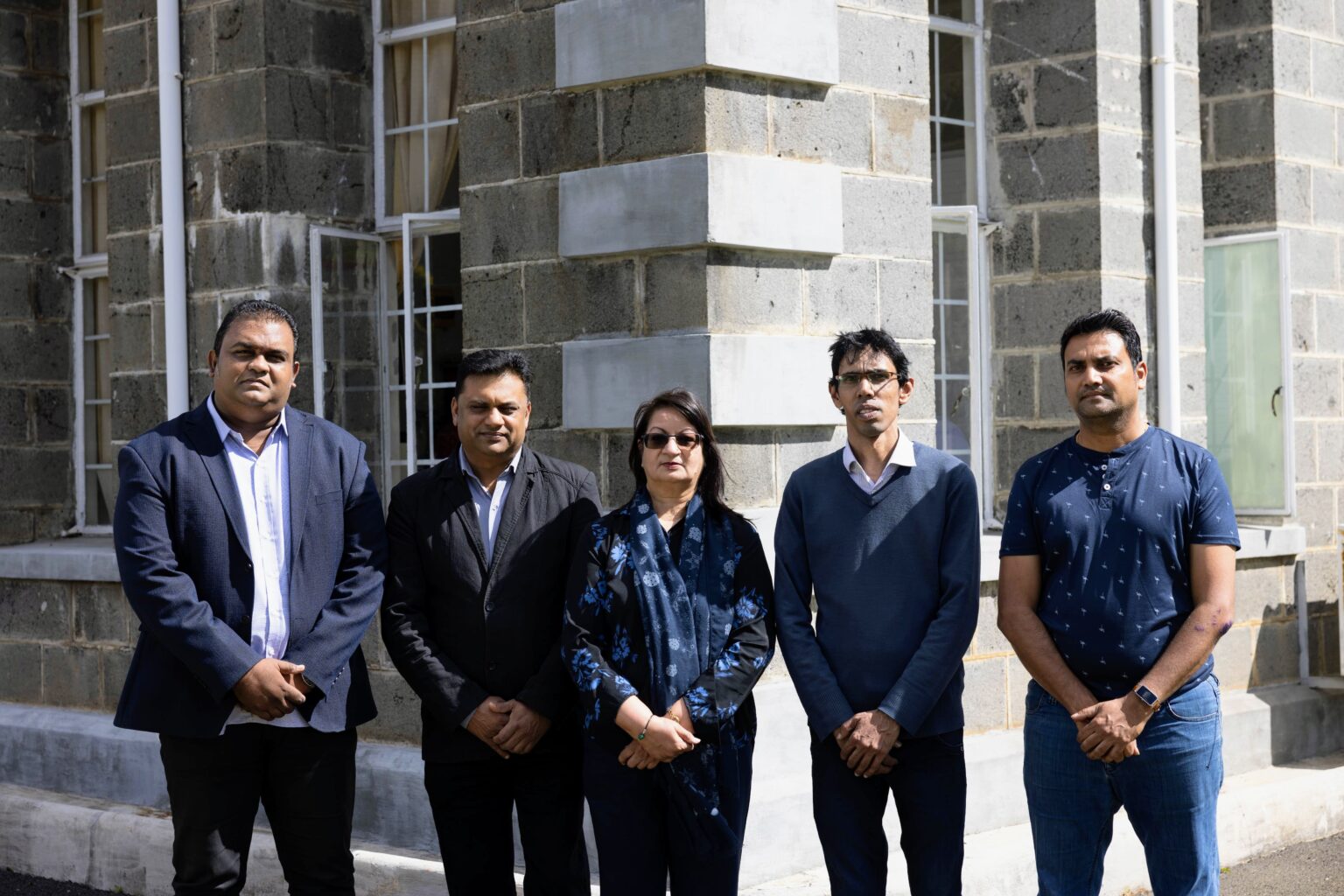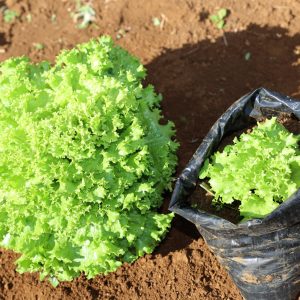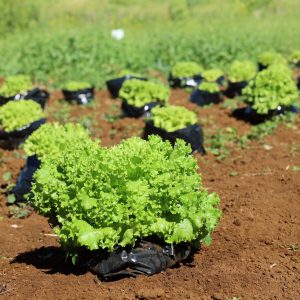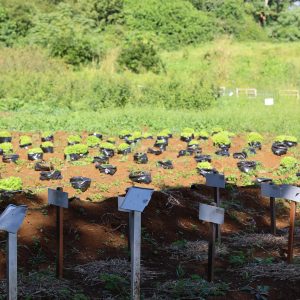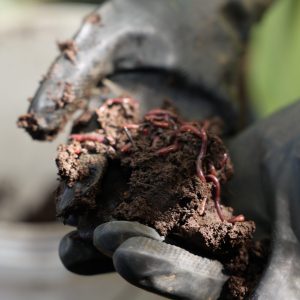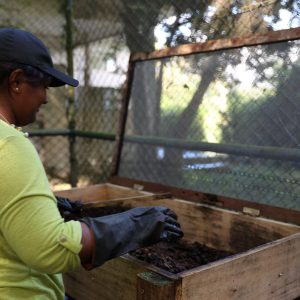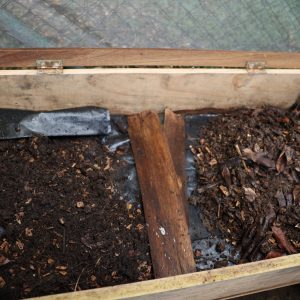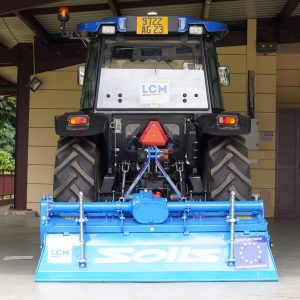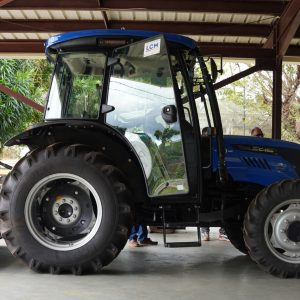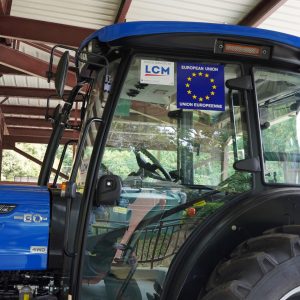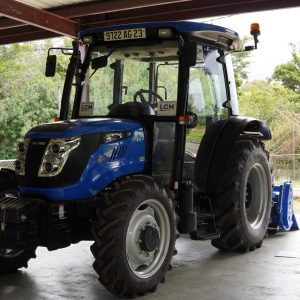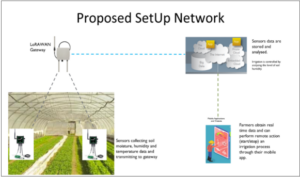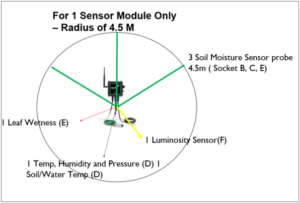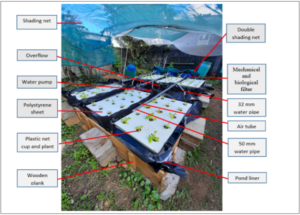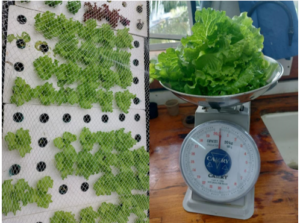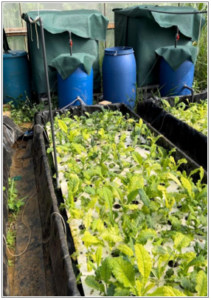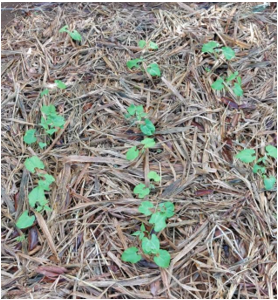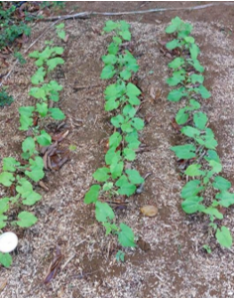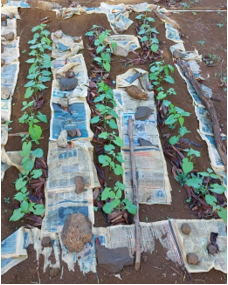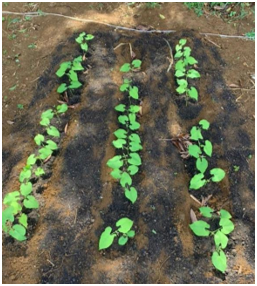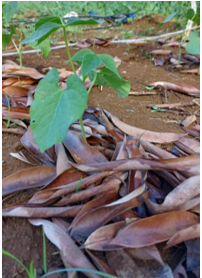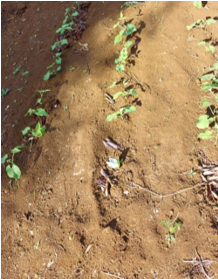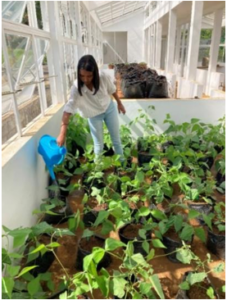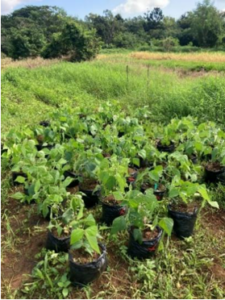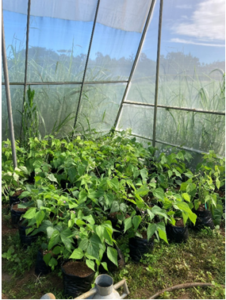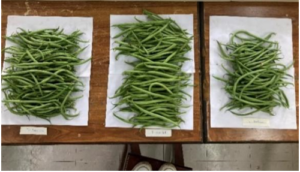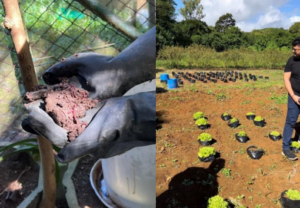Aim: To investigate various water use technologies for use by small scale farmers
Scope: Water management is a key issue in agriculture. The present study proposes to test several types of water regimes (deficit irrigation, field capacity, and normal), as well as different application rates.
- Different irrigation systems (drip and micro-spinkler) were evaluated for Soybean production (Glycine max.(L).
With the increasing world population by 2050, more crops will need to be produced for which more irrigation water will be required, therefore there is a necessity to adopt appropriate irrigation techniques especially in developing countries. There is also growing interest worldwide in using leguminous crops such as (Glycine max.(L)) as high nutritional value crops to address the issue of poverty and food security.
Activities
2.5.1 Testing different irrigation regimes and methods for sustainable agricultural water management;
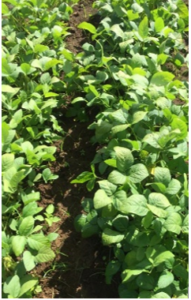
Figure 2.5.1: Canopy of soybean under micro sprinkler irrigation
2.5.2. Identification of the optimum irrigation regimes and application rates for legumes;
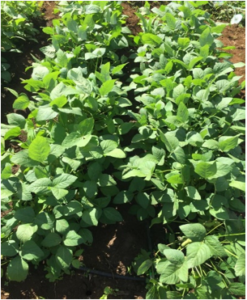
Figure 2.5.2: Canopy of soybean under drip irrigation system
2.5.3 Testing of harvested rainwater for quality and suitability for use in legume production
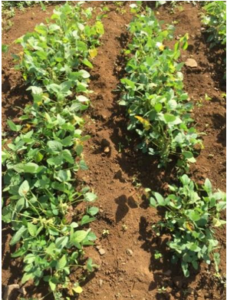
Figure 2.5.3: Canopy of soybean under (control) Rainfed irrigation
The greatest yield was achieved under drip irrigation system which was due to the high efficiency of the system, slow, frequent and precise application of water directly to the root zone with minimal evaporative loss. It was also observed that there was limited weed growth under drip irrigation as compared to sprinkler irrigation and rainfed conditions.
- Different irrigation systems (drip and micro-sprinkler) and form of 13:13:20:2 fertilisers were evaluated for common bean production
The water demand has increased sixfold in the last century and continues to grow at a rate of 1% per year. The nitrogen-fixing potential of Phaseolus vulgaris is normally categorized as weak in comparison to other legumes. Nitrogen fertilizers are commonly used in bean production to achieve high yields. Plants grown under drip irrigation system showed promising results in terms of growth, development and yield as compared to micro sprinklers.
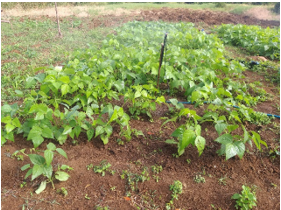
Figure 2.5.4: Drip
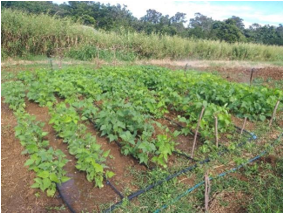
Figure 2.5.5: Micro-sprinkler
- Different irrigation systems (online dripper, inline dripper and micro-sprinkler) were evaluated for Common bean production
Ever since farmers started crop cultivation, they have been able to increase their productivity by relying less on rainfall and focusing more on irrigation systems. Upon adoption of irrigation, farmers were found to be less dependent on natural rainfall.
The most efficient irrigation method was evaluated for common bean production namely online drip system, inline drip system, micro sprinkler system and rainfed(control). Plants grown under online drip system produced the highest yield and lowest weed emergence were observed when using this irrigation system.
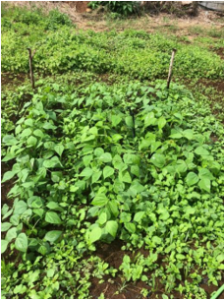
Figure 2.5.6: Online Drip System
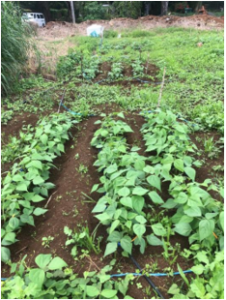
Figure 2.5.7: Micro-sprinkler system
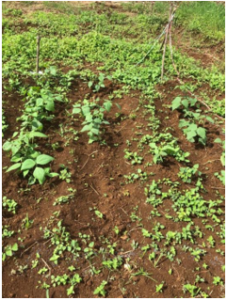
Figure 2.5.8: Inline System
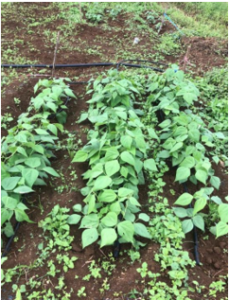
Figure 2.5.9: Rainfed
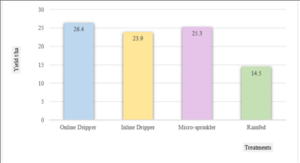
Figure 2.5.10: Total yield achieved under different systems











